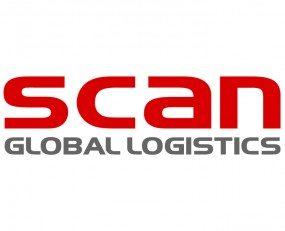
At the end of May, US private equity firm AEA Investors agreed to acquire Danish freight forwarder, Scan Global Logistics (SGL), in a secondary buyout. This represents yet another recent acquisition by a private equity firm in the logistics sector.
The group noted that AEA bought SGL “after a competitive process involving several industrial buyers”, while adding that the management of SGL along with SGL’s strategic partner in the US, TransGroup WorldWide Logistics, will “reinvest alongside AEA Investors to become significant shareholders in SGL”.
Chief Executive, Jesper Nielsen, said SGL was “very pleased to welcome a new long-term, dedicated shareholder group with global reach and profound insight into the logistics sector. This enables us to continue the growth path we have experienced during the past several years”.
While neither the size of the buyout nor the financing mix were disclosed, it’s likely that Scan Global Logistics was taken over in a deal that valued the enterprise – equity value plus net debt – at between €240m and €330m.
That range is based on trading multiples across the freight forwarding sector as well as on the implied take-out multiples associated to SGL’s revenues, adjusted operating cash flows, and earnings, versus those of its public rivals.
While private equity firms could engineer more deals of this size, it seems very likely that consolidation at the high-end of the spectrum, as well as high-profile M&A with higher purchase values, will be left to trade buyers.
Quite simply, private equity cannot afford to write bigger cheques for a single company in this market, while trade buyers can exploit higher synergies when it comes to larger deals, which are easier to finance given a lower cost of equity, among other things.
Key to the success of the SGL deal is whether it will be able to continue to grow revenues and earnings as quickly as it has done over the past five years. In 2015, revenue came in at DKK3.1bn, up 11.2% year-on-year, and all its key financials were sound. By comparison, in 2011 its top-line was about 50% lower at DKK2bn, while the EBITDA margin stood at 0.6%.
SGL is growing, and as it grows it aims to become a more profitable entity; as it noted, EBITDA margin of 3.1% in 2015 exceeded “the prior goal of 3%, which was set (…) a few years ago”.
Currency swings were inevitable, and “the impact of the increasing $/DKK exchange rate is estimated to be approximately DKK6m on EBITDA”, but the hit was manageable, given DKK99m of EBITDA in the past year.
As far as EBITDA margin is concerned, “the new goal for the SGL Group is 4%”, it added, while as a long-term goal “we expect all group entities to generate an average EBITDA margin of 5% over an economic cycle, which means that the SGL Group, after group function costs will generate 4-4.5% over such a period”, it concluded.
Source: Transport Intelligence, July 20, 2016
Author: Alessandro Pasetti